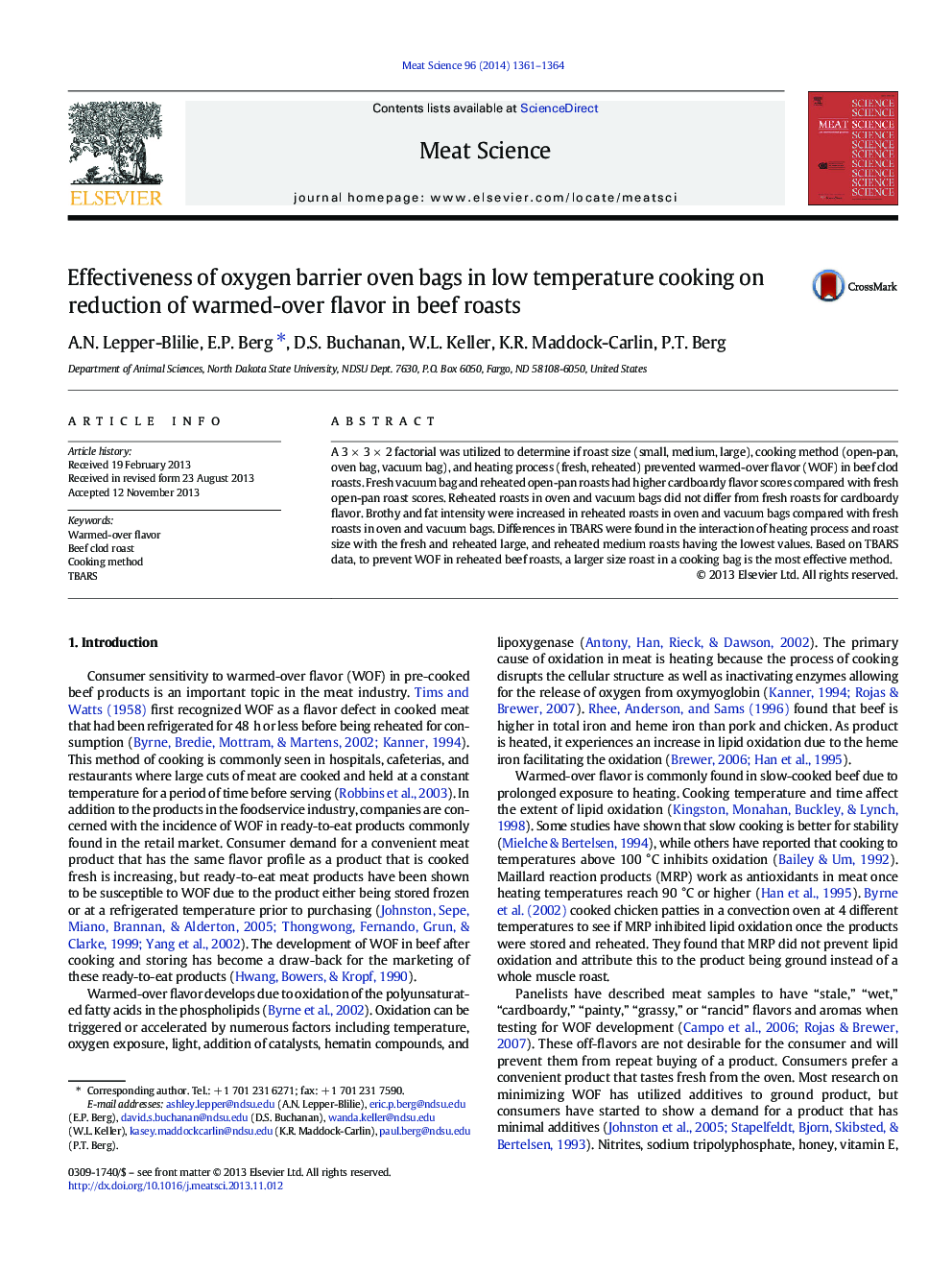| Article ID | Journal | Published Year | Pages | File Type |
|---|---|---|---|---|
| 5791618 | Meat Science | 2014 | 4 Pages |
Abstract
A 3Â ÃÂ 3Â ÃÂ 2 factorial was utilized to determine if roast size (small, medium, large), cooking method (open-pan, oven bag, vacuum bag), and heating process (fresh, reheated) prevented warmed-over flavor (WOF) in beef clod roasts. Fresh vacuum bag and reheated open-pan roasts had higher cardboardy flavor scores compared with fresh open-pan roast scores. Reheated roasts in oven and vacuum bags did not differ from fresh roasts for cardboardy flavor. Brothy and fat intensity were increased in reheated roasts in oven and vacuum bags compared with fresh roasts in oven and vacuum bags. Differences in TBARS were found in the interaction of heating process and roast size with the fresh and reheated large, and reheated medium roasts having the lowest values. Based on TBARS data, to prevent WOF in reheated beef roasts, a larger size roast in a cooking bag is the most effective method.
Keywords
Related Topics
Life Sciences
Agricultural and Biological Sciences
Food Science
Authors
A.N. Lepper-Blilie, E.P. Berg, D.S. Buchanan, W.L. Keller, K.R. Maddock-Carlin, P.T. Berg,
